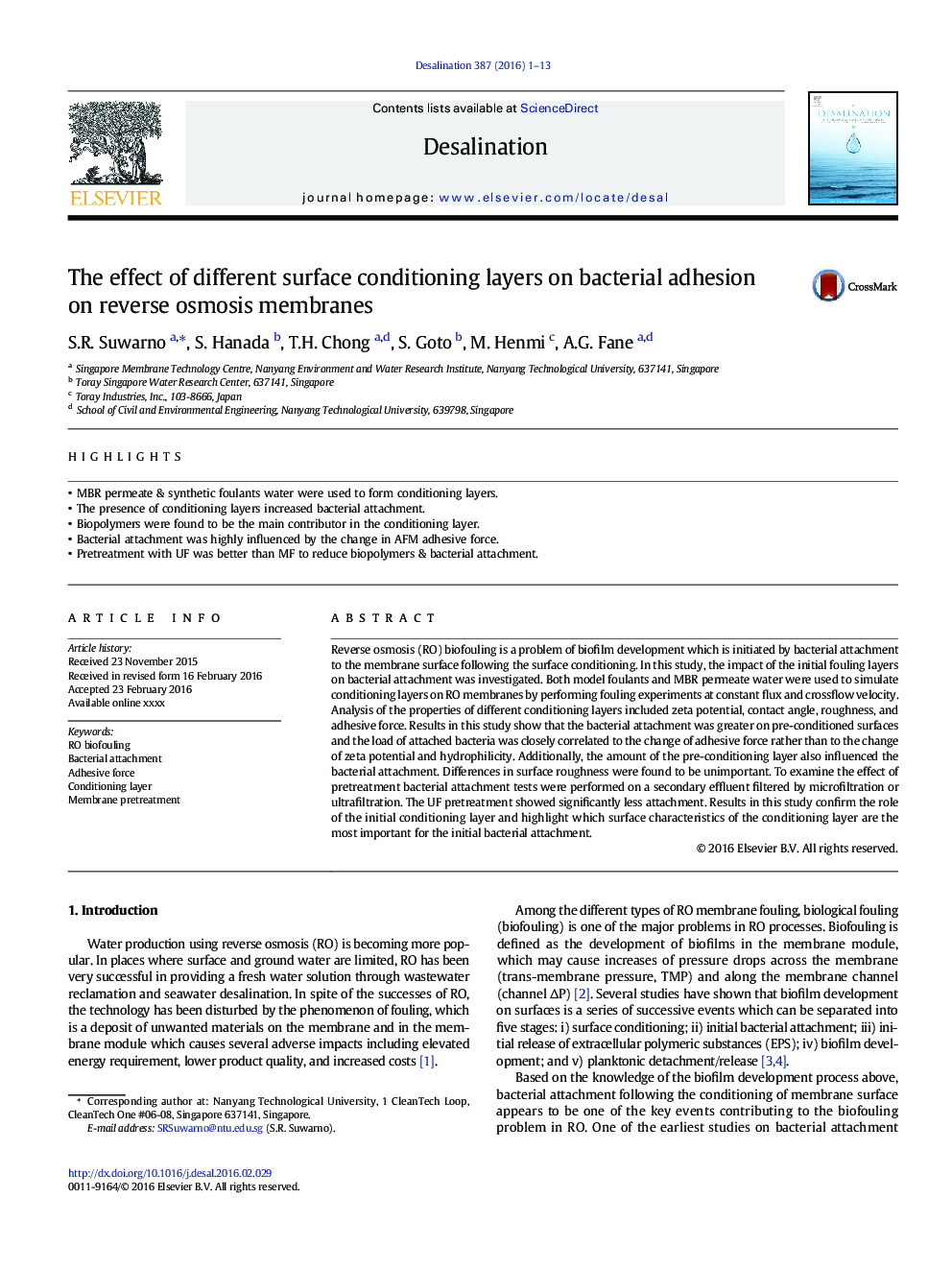| Article ID | Journal | Published Year | Pages | File Type |
|---|---|---|---|---|
| 622884 | Desalination | 2016 | 13 Pages |
Abstract
Reverse osmosis (RO) biofouling is a problem of biofilm development which is initiated by bacterial attachment to the membrane surface following the surface conditioning. In this study, the impact of the initial fouling layers on bacterial attachment was investigated. Both model foulants and MBR permeate water were used to simulate conditioning layers on RO membranes by performing fouling experiments at constant flux and crossflow velocity. Analysis of the properties of different conditioning layers included zeta potential, contact angle, roughness, and adhesive force. Results in this study show that the bacterial attachment was greater on pre-conditioned surfaces and the load of attached bacteria was closely correlated to the change of adhesive force rather than to the change of zeta potential and hydrophilicity. Additionally, the amount of the pre-conditioning layer also influenced the bacterial attachment. Differences in surface roughness were found to be unimportant. To examine the effect of pretreatment bacterial attachment tests were performed on a secondary effluent filtered by microfiltration or ultrafiltration. The UF pretreatment showed significantly less attachment. Results in this study confirm the role of the initial conditioning layer and highlight which surface characteristics of the conditioning layer are the most important for the initial bacterial attachment.
Related Topics
Physical Sciences and Engineering
Chemical Engineering
Filtration and Separation
Authors
S.R. Suwarno, S. Hanada, T.H. Chong, S. Goto, M. Henmi, A.G. Fane,
